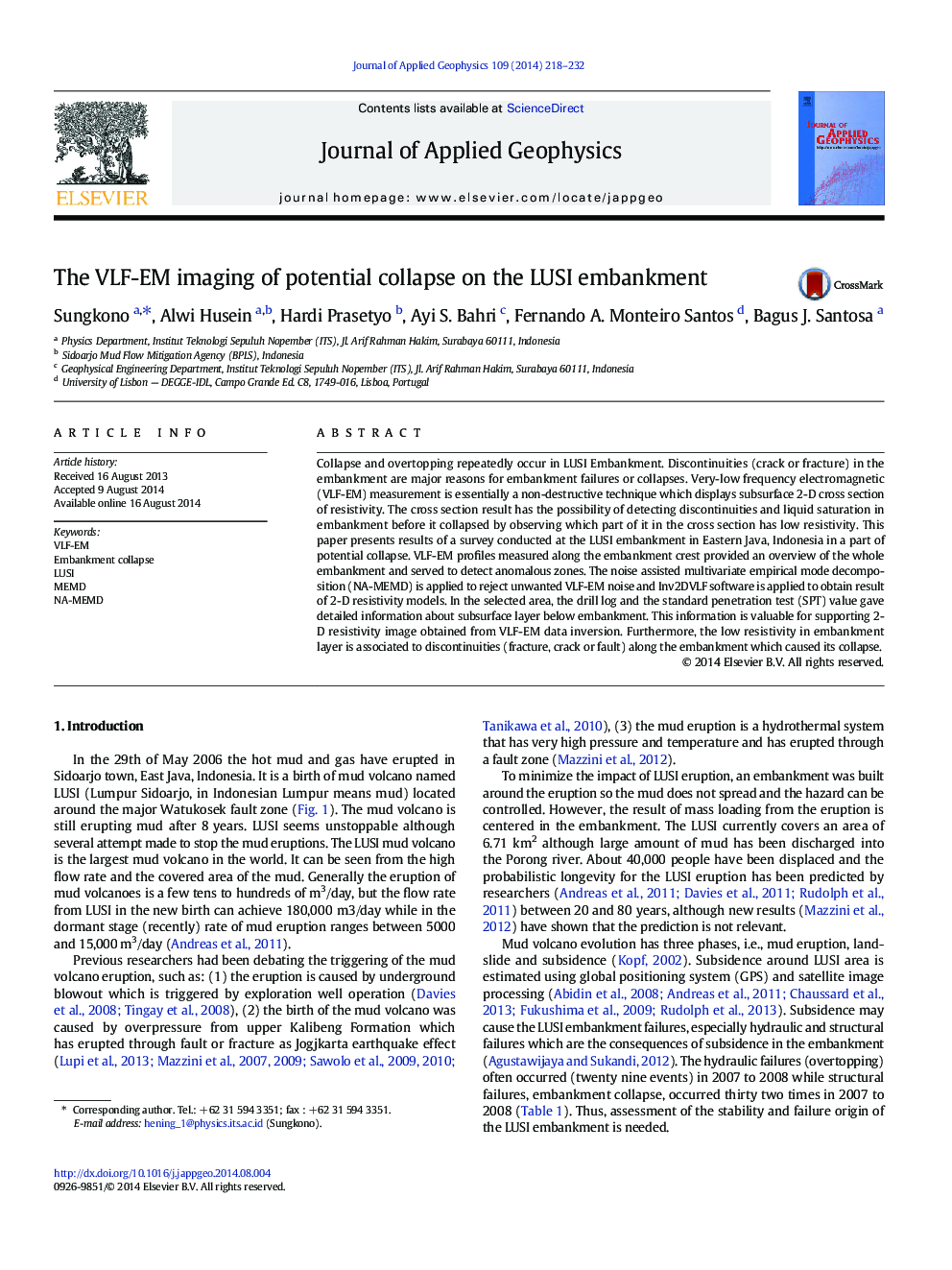| Article ID | Journal | Published Year | Pages | File Type |
|---|---|---|---|---|
| 4740045 | Journal of Applied Geophysics | 2014 | 15 Pages |
•VLF-EM survey was conducted in LUSI embankment potential collapsing.•NA-MEMD filtering method is incorporated into data processing.•Discontinuities across embankment are accurately mapped.•An interpretation on cause of the LUSI embankment collapse is proposed.
Collapse and overtopping repeatedly occur in LUSI Embankment. Discontinuities (crack or fracture) in the embankment are major reasons for embankment failures or collapses. Very-low frequency electromagnetic (VLF-EM) measurement is essentially a non-destructive technique which displays subsurface 2-D cross section of resistivity. The cross section result has the possibility of detecting discontinuities and liquid saturation in embankment before it collapsed by observing which part of it in the cross section has low resistivity. This paper presents results of a survey conducted at the LUSI embankment in Eastern Java, Indonesia in a part of potential collapse. VLF-EM profiles measured along the embankment crest provided an overview of the whole embankment and served to detect anomalous zones. The noise assisted multivariate empirical mode decomposition (NA-MEMD) is applied to reject unwanted VLF-EM noise and Inv2DVLF software is applied to obtain result of 2-D resistivity models. In the selected area, the drill log and the standard penetration test (SPT) value gave detailed information about subsurface layer below embankment. This information is valuable for supporting 2-D resistivity image obtained from VLF-EM data inversion. Furthermore, the low resistivity in embankment layer is associated to discontinuities (fracture, crack or fault) along the embankment which caused its collapse.
